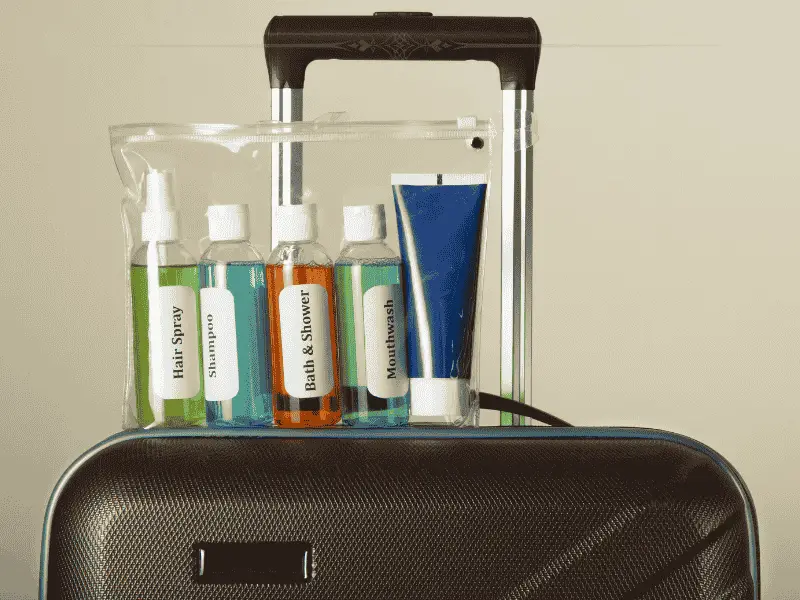The nightmare of airport security is about to change. For nearly two decades, travelers have battled with the notorious 100-milliliter liquid restriction, a rule that transformed how we pack, travel, and prepare for international journeys. Now, a technological revolution is promising to reshape airport security, though not without its own set of complications.

The Origins of Liquid Restrictions
The current liquid rules emerged from a critical moment in aviation history. In August 2006, a terror plot targeting transatlantic flights prompted an immediate and dramatic overhaul of airport security. Perpetrators had planned to use liquid-based explosive devices, leading to an unprecedented global response that seemingly overnight changed international travel forever.
The initial rules were stark and uncompromising. Airlines and passengers found themselves navigating a new world of strict limitations. Even basic items like pens were scrutinized, with ink considered a potential liquid threat. The only exceptions were made for critical needs, such as baby milk – and even then, only after mothers demonstrated the liquid’s authenticity by tasting it in front of security personnel.
The Promise of Technological Solutions
Modern computed tomography (CT) scanners represent the cutting edge of airport security technology. These advanced machines, borrowing technology from medical imaging, can perform molecular-level analysis of bag contents. Unlike traditional scanners, CT technology creates three-dimensional images, allowing security personnel to examine items with unprecedented detail.
The technological promise is significant. These new scanners can potentially:
- Detect potential threats more accurately
- Reduce the need for manual bag searches
- Minimize passenger disruption
- Provide more sophisticated threat assessment
The Timeline of Transformation
The journey towards more advanced security has been long and complicated. In 2019, initial promises suggested major changes would be implemented by 2022. When that deadline passed, the target shifted to June 1, 2024 – a date that would become crucial in the ongoing security evolution.
Seven airports emerged as early adopters of the new technology: Aberdeen, Newcastle, Teesside, Leeds Bradford, Birmingham, Southend, and London City. These airports saw an opportunity to provide a superior passenger experience, with hopes of allowing up to 2 liters of liquids through security.
However, the path to improved security has not been smooth. In a surprising turn of events, just days after the June 2024 deadline, airports were ordered to revert to the 100-milliliter liquid limit. This wasn’t due to security concerns, but rather technical challenges with the new scanning equipment.
Sources revealed that the new scanners were experiencing significant issues. Harmless items like sunscreen were being misidentified as potential threats. While security was never compromised, the scanning process was creating lengthy queues and multiple
The liquid restriction challenge is not unique to one country or region. Worldwide, airport security remains a complex patchwork of different approaches. Some countries maintain strict liquid limitations, while others experiment with more flexible screening methods.
The European Union has been particularly cautious. By September 2024, the entire Schengen Area will revert to previous security protocols, citing concerns about the new scanning technology. This global inconsistency creates significant challenges for international travelers.
Implementing new security technology is far from simple. Airports face massive investments, with some needing to construct entirely new screening halls to accommodate the advanced CT scanners. The equipment is not only expensive but also extremely heavy, requiring significant infrastructure modifications.
Major airports like Heathrow face the most complex upgrades. With 146 security lanes to replace, the logistical challenge is immense. Other airports have a comparatively easier path, with some needing to upgrade fewer than ten lanes.
The Passenger Experience
For travelers, the security process remains frustrating and confusing. The dream of seamless, stress-free airport security continues to be just out of reach. While technology promises improvements, the reality is a continued series of compromises and challenges.
Passengers must remain adaptable. The inconsistency between different airports and regions means that what works in one location may not apply in another. Careful preparation and flexibility are more important than ever.
Aviation security experts remain optimistic. The long-term vision is a security process so sophisticated that passengers can virtually walk through without interruption. Imagine a corridor flanked by advanced detectors that can assess potential risks without requiring passengers to stop or remove items.
The International Air Transport Association (IATA) has been working on a “Smart Security” project for over a decade. The ultimate goal is to eliminate traditional security measures like walk-through metal detectors and invasive pat-downs, replacing them with more intelligent threat assessment technologies.
Practical Advice for Travelers
Until the new system is fully implemented, travelers should:
- Continue adhering to the 100-milliliter liquid limit
- Prepare for potential variations between airports
- Allow extra time for security screening
- Stay informed about the latest security protocols
- Pack smartly and be prepared for potential manual checks
The liquid security rules are at a critical juncture. Technology promises a revolution in how we approach airport security, but the path is neither straight nor simple. Travelers stand at the intersection of safety, convenience, and technological innovation.
As airports continue to upgrade their security infrastructure, the promise of a smoother, more intelligent screening process remains tantalizing. The journey continues, with each technological advancement bringing us closer to a more efficient and less stressful travel experience.



